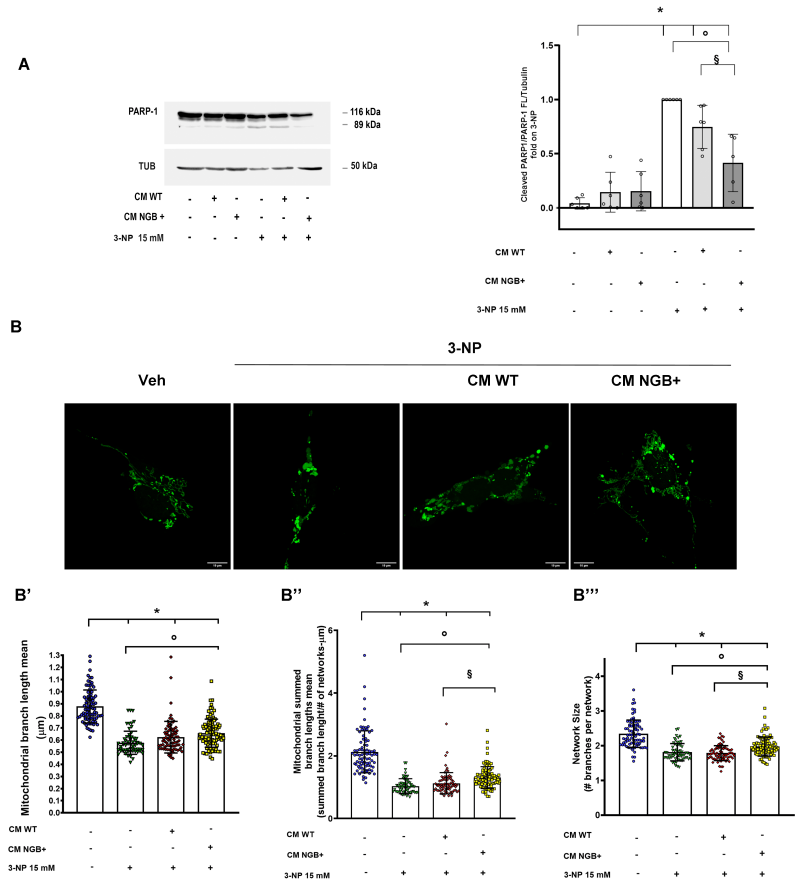Back to article: Neuroglobin-enriched secretome provides neuroprotection against hydrogen peroxide and mitochondrial toxin-induced cellular stress
FIGURE 4: Effects of NGB-enriched conditioned media on 3-NP induced mitochondrial toxicity. Representative Western blot showing the level of cleavage of PARP-1 in SH-SY5Y cells treated with the mitochondrial toxin 3-Nitropropionic acid (3-NP; 15 mM; 24 h) in presence or absence of pre- stimulation (4 h) with CM WT or CM NGB+ (A). Fluorescence image of SH-SY5Y mito-mEFP cells pre-stimulated with CM WT of CM NGB+ (4 h) before the exposure to 3-NP toxicity for 4 h (B). Bar graphs report the mitochondrial branch length mean (B’), summed branch lengths mean (B”) and mean network size (B”’) obtained by the analysis of about 60 cells from three independent experiments. For Western blot analysis, representative blot (left) and relative densitometric analysis (right) obtained from at least four independent experiments are reported. The levels of cleaved PARP-1 were normalized to the full-length PARP-1 and tubulin levels on the same filter. In all cases, statistical significance was determined with ANOVA followed by Tukey-Kramer post-test vs CTRL condition (*), vs 3-NP condition (◦) or vs treatment with 3-NP and CM WT (§).

